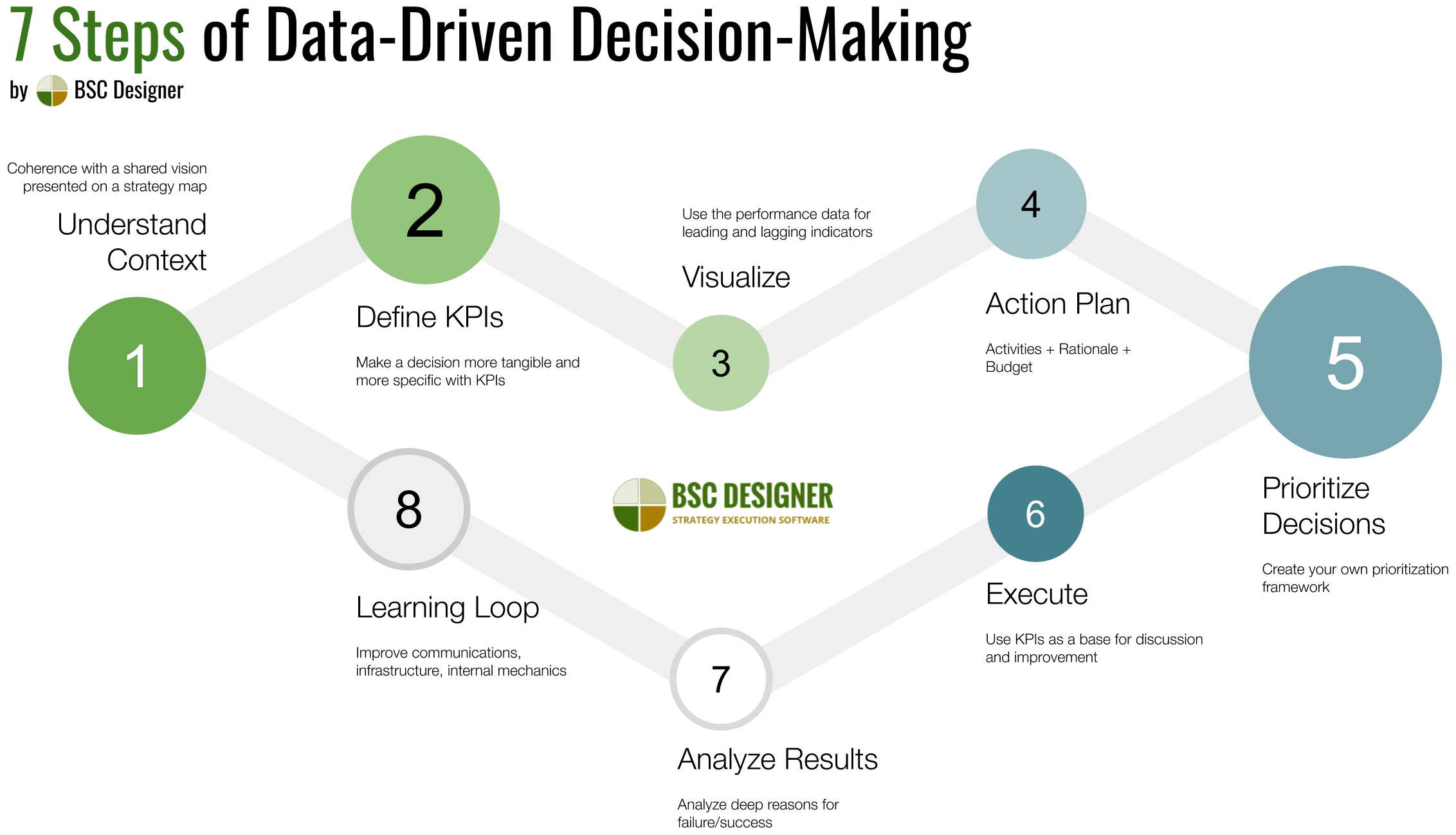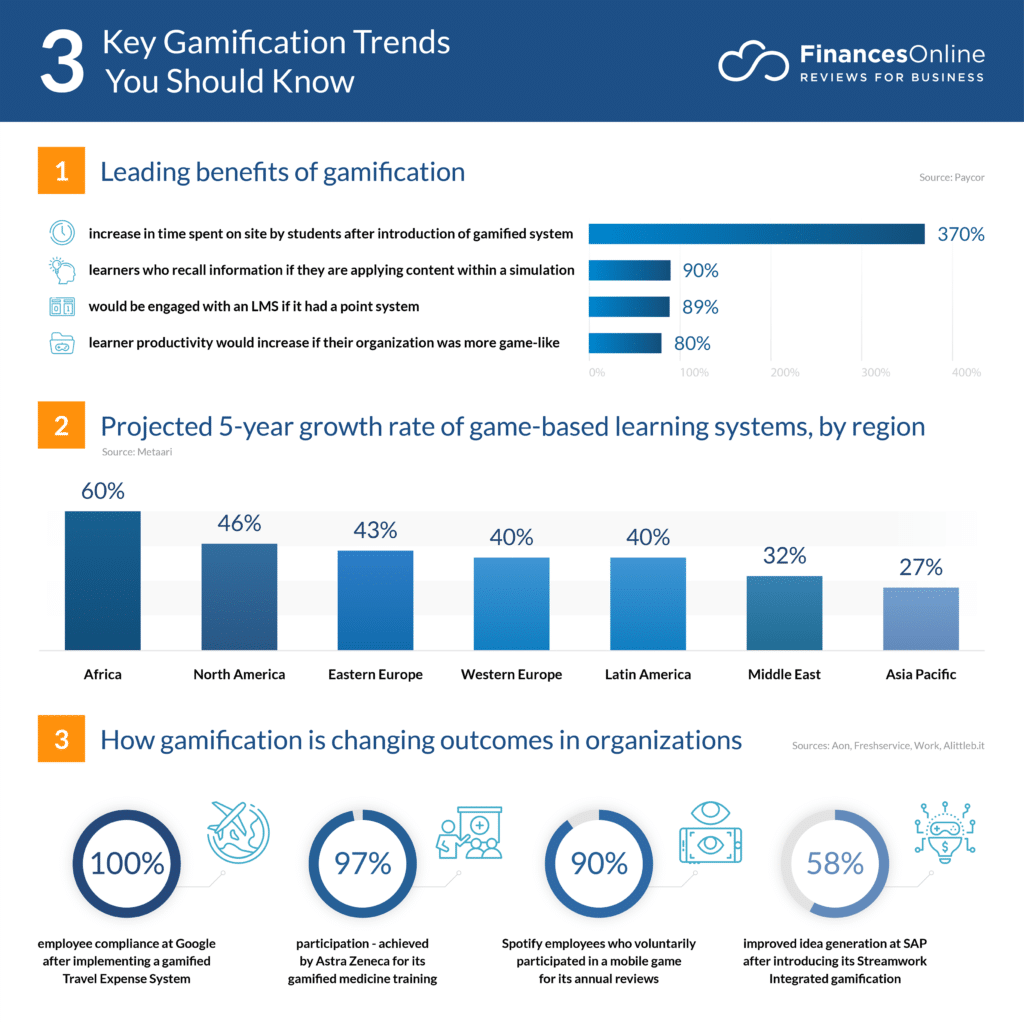Product Growth: Unraveling The Fundamental Drivers For Success
Product growth is driven by several factors. Recognising these factors, you can better understand how to set your business apart and take informed strategic actions.
This blog post explores the drivers of product growth and uncovers the intricacies of developing and executing a product-led growth strategy.
Table of Contents
- #1. Market analysis and customer insights
- #2. Product-market fit
- #3. Effective user acquisition strategies
- #4. User retention and engagement
- #5. Data-driven decision making
- #6. Scalability and infrastructure
- #7. Continuous innovation and iterative improvement
- #8. Strategic partnerships and expansion opportunities
- Leveraging gamification to drive product growth
- Conclusion
- Machine Learning In Finance: 12 Essential Applications
- How To Create Interactive Compliance Training For Bank Employees
- How Fintech Apps Are Using Gamification To Increase User Engagement
- Top Gamification Companies for Employee & Customer Engagement
#1. Market analysis and customer insights
Market analysis involves systematically studying market conditions, trends, and competition to understand the overall landscape in which a product operates. Customer insights deal with understanding customer preferences, behaviours, and needs.
Businesses can tailor products, strategies, and experiences to increase customer satisfaction, loyalty, and product growth.
Conducting thorough market research to identify the target audience and market trends
Companies must identify their target audience and understand their needs, wants, and purchasing behaviours to meet customer demands. Market trends data helps businesses better position their products to meet the evolving needs of their customers.
This market research data serves as a reference point for decision-making. To augment this, businesses can conduct customer segmentation to identify the target audience’s age group, preferences, shopping channels, etc.

Source: fourweekmba.com
Analysing customer behaviour, preferences, and evolving needs
Here are a few steps to conduct a customer behaviour analysis:
- Start by dividing your audience based on various factors, such as demographics, interests, location, and behaviour.
- Gather quantitative and qualitative data from different sources to gain insights into consumer trends.
- Understand the customer journey and measure the success of your strategies using metrics like conversion rate and customer lifetime value.
Remember that continuous analysis is crucial to stay updated with evolving trends.
Uncovering market gaps and opportunities for product growth
This involves identifying unfulfilled user needs, untapped segments, and emerging trends within a target market. Through this process, your business can position itself strategically to capitalise on market demand and gain a competitive advantage.
#2. Product-market fit
Growth product managers must strive for a solid product-market fit to drive sustainable product growth. This involves aligning the growth product management work’s value proposition with the needs and desires of the target market.
Let’s dive into the key components that drive product-market fit.
Defining and refining the product’s value proposition to align with customer needs
Identify your product’s unique benefits and features that make it resonate with the target audience. By understanding customer needs and pain points, you can refine its value proposition to ensure it addresses customers’ specific challenges.
At this stage, focusing on seamless team collaboration, task tracking, and real-time project updates is particularly important.
Conducting user validation and feedback to ensure product-market fit
Focus on validating whether your product meets customer expectations by engaging with users and gathering feedback. This iterative process allows companies to fine-tune their product and make necessary adjustments based on user insights.
When Instagram launched in October 2010, it focused on photo-sharing features. It needed more extensive filters and editing options. The company recognised the importance of user feedback. They iteratively refined its app based on user validation during beta testing.

Source: instagram.com
#3. Effective user acquisition strategies
Effective customer acquisition strategies can help businesses reach their target audience, generate leads, and convert them into more loyal customers.
Let’s explore a few methods in greater detail.
Identifying the most suitable channels to reach and acquire the target audience
To acquire customers effectively, businesses must identify the channels that resonate best with their target audience. Whether through social media, search engine marketing, or influencer partnerships, understanding the preferred channels ensures maximum reach and engagement.
Implementing targeted marketing campaigns and lead-generation tactics
When segmenting the audience, businesses can tailor their messages and offerings to specific customer groups. This increases the likelihood of capturing the attention of potential customers and converting them into leads.

Source: hubspot.com
An example is HubSpot, which offers comprehensive marketing, sales, and customer service tools. As a SaaS company, they understand the importance of reaching the right audience and generating qualified leads to drive growth.
Optimising conversion funnels and onboarding processes for efficient customer acquisition
Efficient customer acquisition relies on optimising conversion funnels and streamlining the onboarding process. Businesses can increase conversion rates and accelerate customer acquisition by removing value barriers and providing a seamless user experience.
You can optimise this process by analysing and refining conversion points, removing friction, and simplifying the new user acquisition experience.
#4. User retention and engagement
Customer retention strategies involve keeping customers using a product or service for an extended period. Meanwhile, the user journey or engagement refers to users’ interaction and involvement with the product.
Let’s explore the key components that drive customer loyalty and keep users actively engaged with a product or service.
Designing a seamless and engaging user experience to drive customer loyalty
Designing intuitive interfaces, streamlining processes, and focusing on user-centric design principles are necessary for businesses. Doing so can create a positive and memorable experience that keeps users returning.
An example of a company that does this is Uber Eats, a food delivery app. Uber Eats invested in improving its user interface and overall experience to make it more convenient and engaging for customers. They introduced personalised recommendations, easy navigation, and quick checkout options.

Source: ubereats.com
Implementing personalised communication and proactive customer support
Product management teams can strengthen customer relationships by tailoring messages, recommendations, and support to individual user preferences and needs. Personalisation can also foster a sense of loyalty, enhancing the overall user experience and boosting customer retention rates.
#5. Data-driven decision making
Growth product management focuses on making the right decisions. This means making decisions based on relevant data so product teams can work towards sustainable product growth. It helps them understand how users behave, improve an existing product’s value, and measure the impact of their strategies.
Below is an illustration of how to make data-driven decisions:

Source: bscdesigner.com
Utilising data analytics
Analysing data on user interactions and purchasing patterns can help businesses uncover valuable information that informs product improvements and marketing strategies. For example, an e-commerce platform can analyse customer browsing behaviour to identify popular product categories, price points, and customer preferences.
Measuring and tracking key performance indicators (KPIs) for growth assessment
KPIs allow businesses to monitor the effectiveness of their strategies and initiatives. These provide valuable insights into areas of success and areas that require improvement from the product growth team.
By monitoring these metrics, businesses can assess the performance of their growth strategies and prioritise innovation to provide more value.
Making informed decisions and strategic adjustments based on data-driven insights
Organisations can enhance decision-making, minimise risks, and optimise operations using data-driven insights. Analysing behavioural patterns, business metrics, and customer feedback can help identify opportunities and adapt strategies to maximise growth function.
#6. Scalability and infrastructure
Scalability and infrastructure provide a solid foundation for a productive growth process that supports stability, flexibility, and efficient resource allocation.
Establishing scalable processes, systems, and infrastructure to support growth
As a product growth manager, you must establish processes, systems, and infrastructure that can scale as demand increases. This includes implementing efficient workflows, utilising cloud-based technologies, and adopting scalable software solutions.
Investing in automated inventory and product management systems and robust order fulfilment processes are great options too. These scalable infrastructure components enable the platform to handle increasing order volumes efficiently and deliver a seamless experience.
Optimising technical architecture and operational workflows for scalability
Accommodate growth without sacrificing performance or user experience by designing a scalable technical infrastructure. Streamline operational workflows and automate repetitive tasks to improve efficiency and scalability.
Planning for resource allocation and scalability to accommodate increasing demand
Anticipate growth and allocate resources effectively, including staffing, infrastructure, and budget. By forecasting growth trends and aligning resources accordingly, product teams can ensure a seamless experience for users and maintain service quality.
#7. Continuous innovation and iterative improvement
Constant innovation and iterative improvement enable businesses to stay competitive, meet evolving customer needs, and enhance the overall product experience. This helps foster a culture of innovation and adapt to changing market dynamics to further maximise the company’s growth model.
Cultivating a culture of innovation, experimentation, and learning
Encourage employees to think creatively and embrace a growth mindset that values learning from successes and failures.
For example, Google is renowned for its innovative culture. Their employees can explore new ideas and experiment with different approaches to solving customer problems. This continuous learning and innovation mindset fuels their product development and drives long-term growth.
Encouraging cross-functional collaboration for idea generation and improvement
Collaboration is critical to generating new ideas and driving product growth. With cross-functional teams in place, businesses can leverage diverse perspectives to drive innovation and enhance their products.
Continuously evolving the product to meet changing customer expectations and market dynamics
To keep up with the changes in the market, businesses need to listen to customer feedback. Studying market trends and making regular improvements to improve their product is also crucial.
For instance, companies like Apple and Microsoft regularly release updates and new versions of their products. They do this to address what users have to say, add new features, and keep up with what people want. By continually trying to improve, they can stay relevant and meet the changing needs of their customers.
#8. Strategic partnerships and expansion opportunities
Collaborations with other company resources help businesses leverage the expertise of strategic partners to drive product growth.
These combined efforts can open up new markets, provide access to new customer segments, and ultimately maximising growth potential.
Exploring strategic collaborations to access new markets and customer segments
Partnering with complementary industry leaders can help leverage expertise, user base, or distribution channels. This allows the business to expand its marketing reach and explore untapped opportunities.
For example, a technology startup might collaborate with an established retail brand to integrate its innovative solutions into its existing product line. This strategic partnership enables the startup to access a broader customer base. It also provides the retail brand a competitive edge through enhanced product offerings.
Expanding product offerings and diversifying revenue streams
When a company introduces new products that go well with what they already offer, it stands out as a one-stop resource. This enables customers to derive more value from a single provider, making them loyal and improving revenue flow.
Diversifying allows the company to meet broader customer needs and grab a bigger market share.
Evaluating opportunities for geographical or industry expansion
By entering new markets or industries, businesses can tap into new customer bases and stay ahead of competitors.
For instance, a successful online clothing retailer may identify a top product led by growing consumer demand in a specific international market.
Leveraging gamification to drive product growth
You can make your products more engaging and enjoyable by giving users challenges, rewards, and interactive features. Involving consumers with the product and sharing their experiences with others.
That’s essentially what gamification is all about. Here are some critical gamification stats and trends to better understand how they can benefit your business.

Source: financesonline.com
Understanding the concept and benefits of gamification in product growth
Gamification involves integrating game-like elements, such as challenges, rewards, and leaderboards, into non-game contexts to motivate and engage users.
It taps into our natural desire for competition, achievement, and progression, making the product experience more enjoyable and immersive. In this way, a strong focus on gamification strategies can be integral to sustained product growth and engagement.
Exploring different gamification techniques and strategies
There are a variety of gamification techniques and strategies that businesses can explore. These include providing rewards and incentives, creating interactive challenges and missions, incorporating social elements, and personalising the user experience.
Each technique serves a specific purpose and can be tailored to suit different product contexts and target audiences.
Best practices for integrating gamification into the product experience
Integrating gamification into the product experience requires careful planning and execution. Aligning gamification elements with the product’s goals and user motivations is essential. Some standard best practices include:
- Setting clear objectives
- Designing meaningful rewards and feedback systems
- Maintaining a balance between challenge and attainability
- Providing autonomy and choice
- Creating a sense of progression
- Incorporating competition and collaboration
- Avoiding overcomplicated gamification strategies
Read also: Gamification Marketing: Using Game Elements To Motivate Customers
Conclusion
Achieving significant product growth requires businesses to adopt a holistic approach encompassing these fundamental drivers. It requires a growth-oriented mindset committed to ongoing improvement and a relentless focus on understanding and meeting customer needs.
By harnessing the power of these drivers, businesses can position themselves for long-term success in a competitive market.
Download your free
“Gamification Guide”
Get your PDF now and start transforming your approach to digital engagement!
Latest Posts
Machine Learning In Finance: 12 Essential Applications
The impact of machine learning on finance is significant. Thanks to this technology, financial institutions are now equipped to make efficient decisions. Through the analysis of data sets, machine learning […]
How To Create Interactive Compliance Training For Bank Employees
Banking compliance training isn’t just another task. It’s the stage where everything else performs. Banks must navigate a myriad of regulations and laws. After all, this is a trust-driven, high-stakes […]
How Fintech Apps Are Using Gamification To Increase User Engagement
Discover how gamification in fintech is revolutionizing financial engagement, making banking fun & boosting user loyalty.





